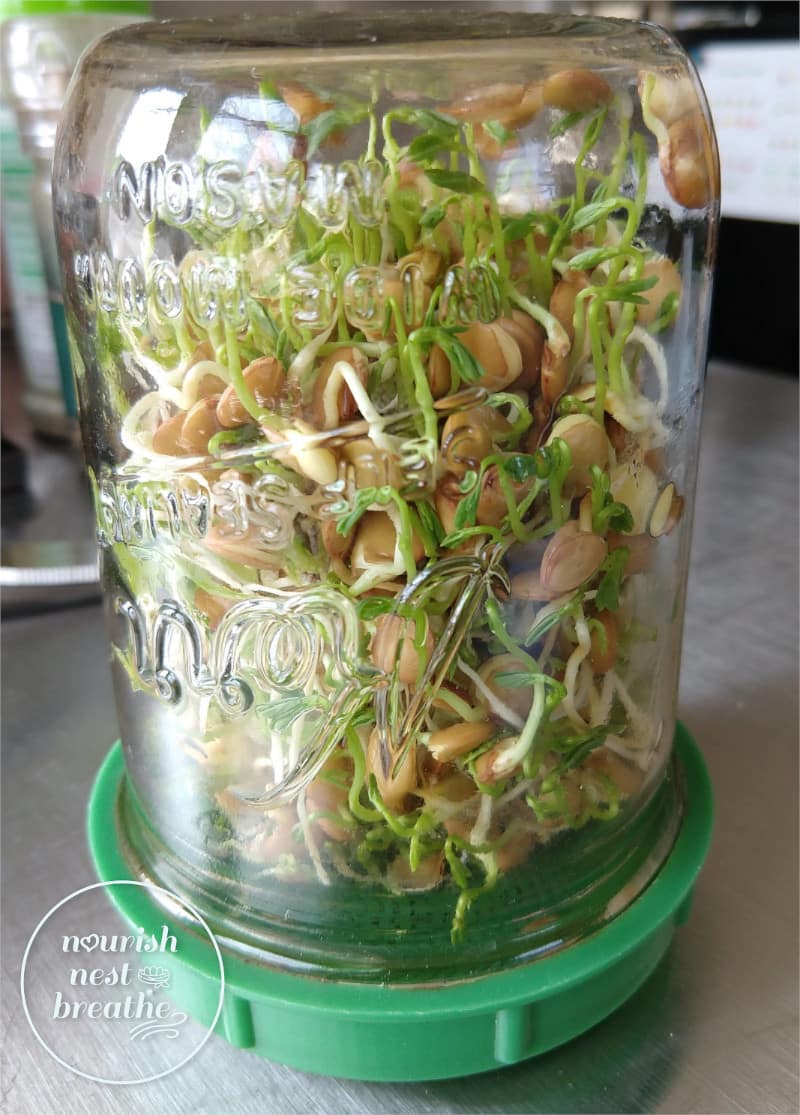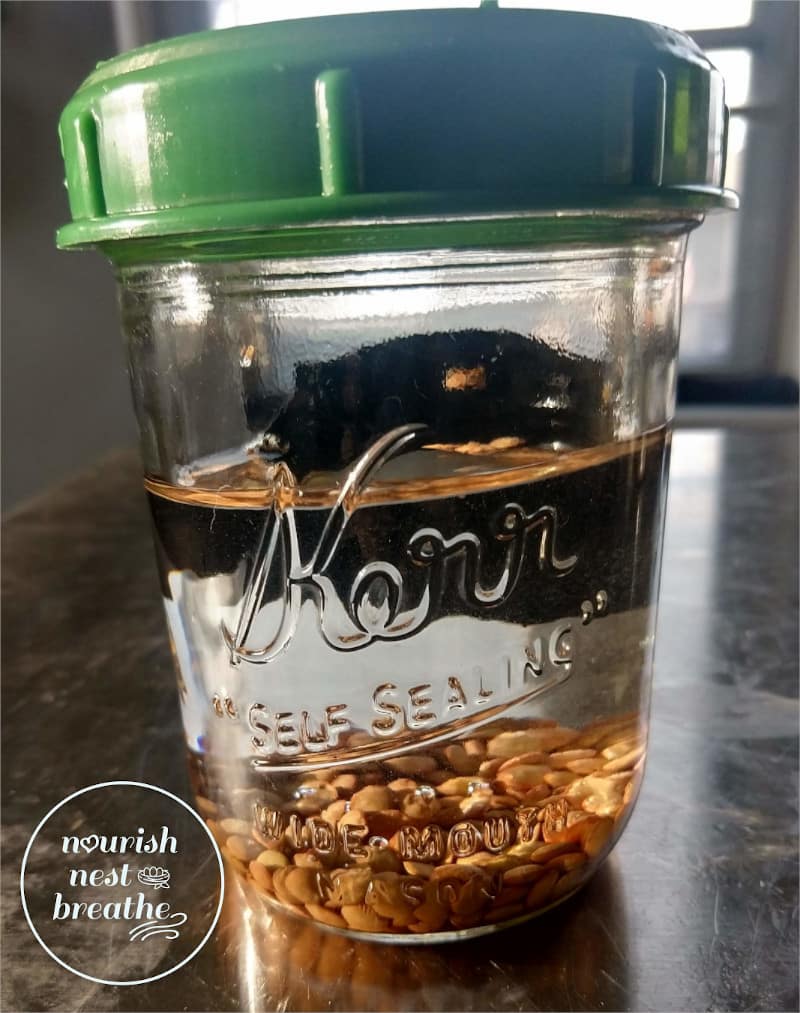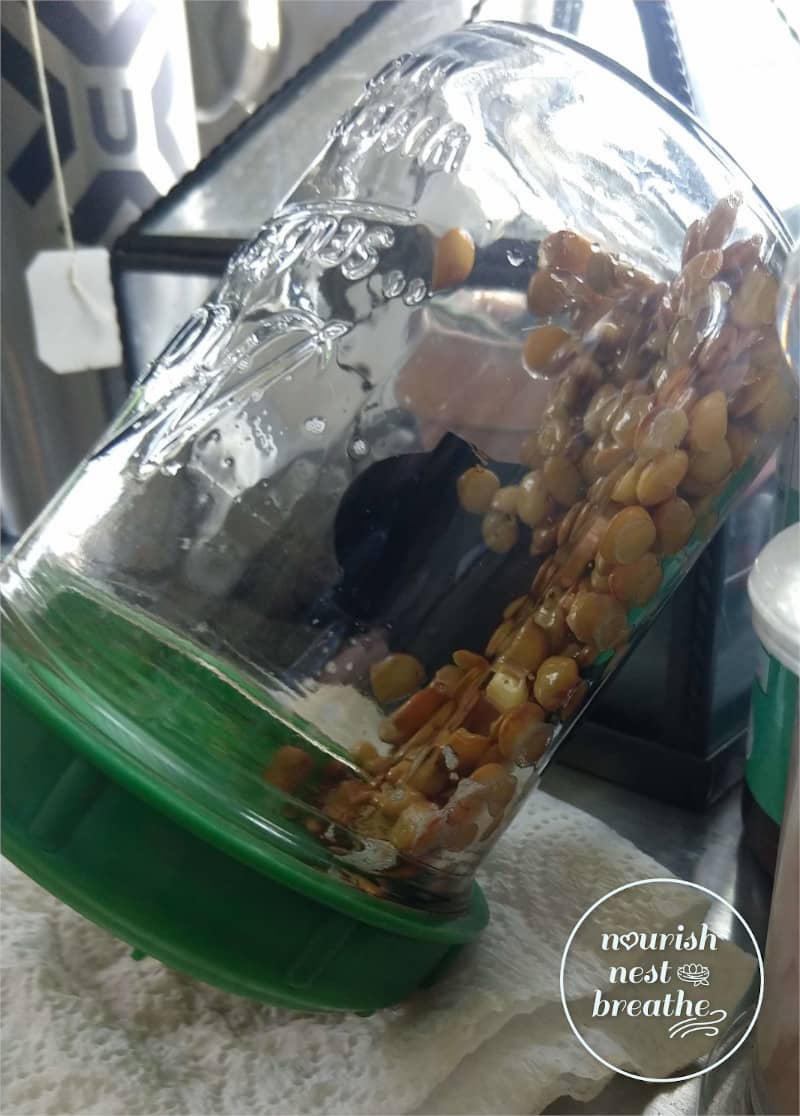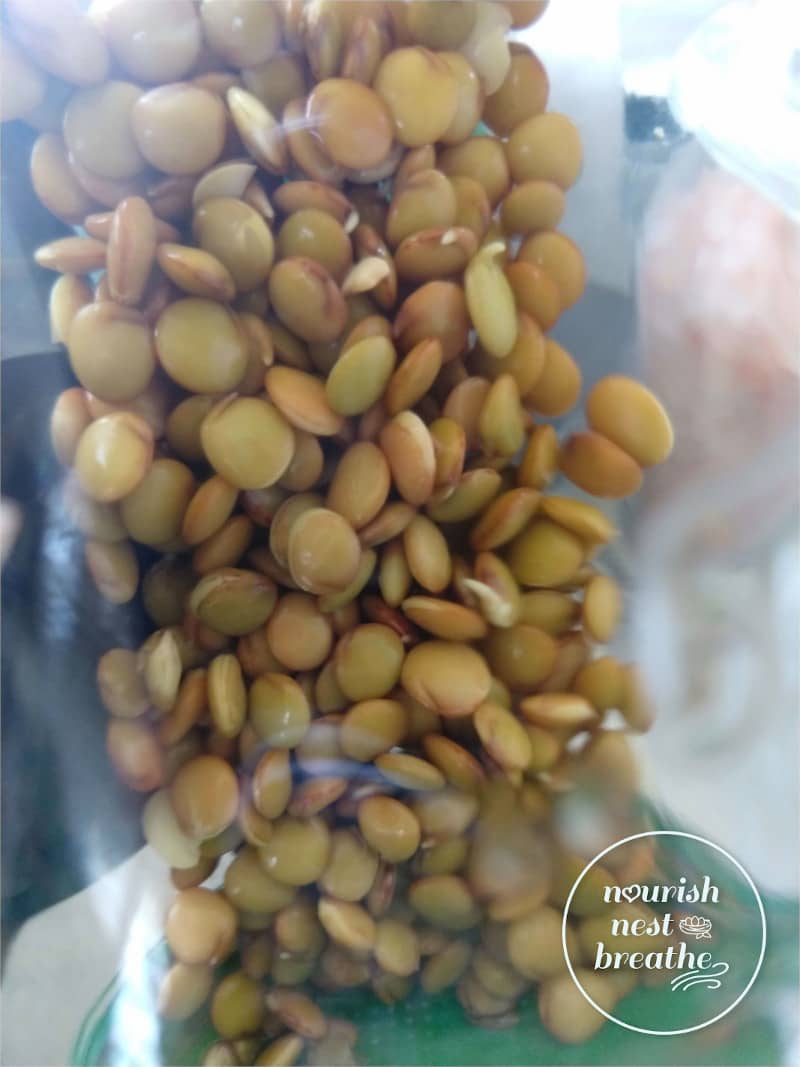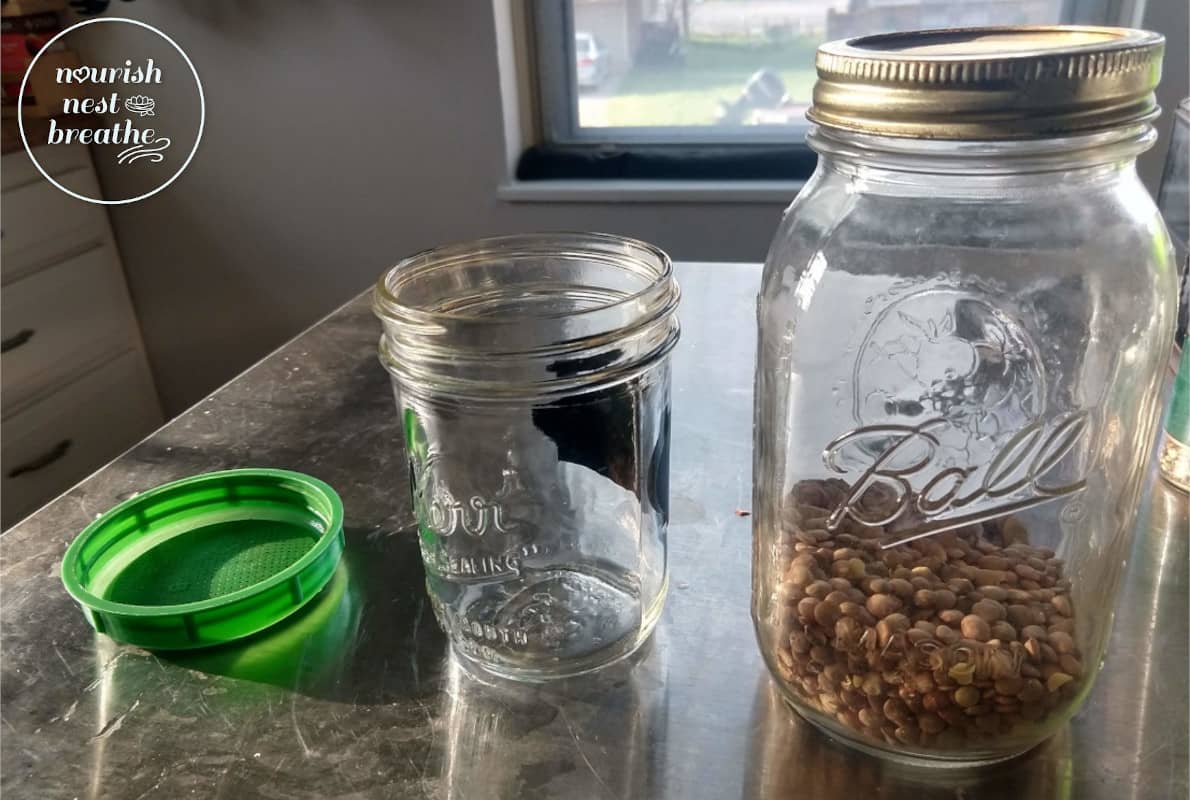
For most of my adult life, I’ve lived in apartments. Some of them have had patios or communal yards, but I’ve never had my own space to grow a garden. And even if I did, I move every year or two, and wouldn’t be around long enough to reap most of the benefits of that garden. I’ve struggled with growing herbs and greens in containers (never enough light). But where I have been successful is in growing my own sprouts.
With just a mason jar and a handful of lentils, I can have fresh healthy sprouts ready to top my sandwiches, salads, and savory breakfasts in just a few days! Better yet, I can grow my sprouts on my kitchen counter all year round (including in the coldest days of winter). And my DIY sprouts are foolproof – I have yet to have a batch of lentils not turn into lush delicious sprouts.
So even if you live in a tiny apartment with no natural light, you can have fresh greens ready to go in just a few days – no matter what time of year it is!
Gather your supplies
Your DIY Sprouts Jar
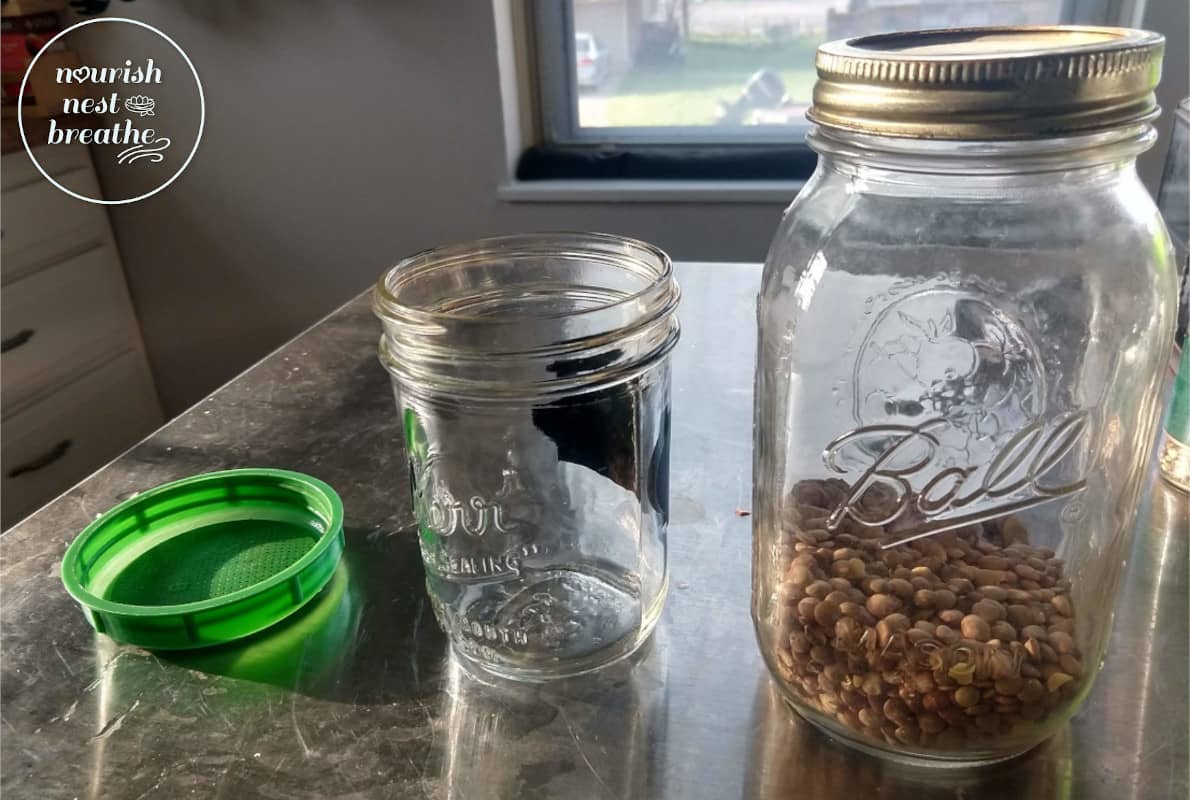 To grow your own sprouts you’ll need a few things to get started. I like sprouting in wide-mouth pint-sized mason jars for a few reasons.
To grow your own sprouts you’ll need a few things to get started. I like sprouting in wide-mouth pint-sized mason jars for a few reasons.
- First, commercial sprouting lids are designed to fit these jars.
- Second, I can fit my hand inside a wide-mouth jar to grab a pinch of sprouts getting just what I need.
- Third, a pint-sized jar is just right for me to be able to eat one jar of sprouts before they get too big!
I regularly see mason jars at the thrift store. If you’re looking to get started with your own DIY sprouts and don’t have a wide-mouth mason jar hanging around at home, this is a great place to get started. I suggest sterilizing your jar well (a run through the dishwasher or a bath in boiling water works) before using it to grow your sprouts. In case you can’t find second hand mason jars or would rather buy new, this is what you’re looking for.
The Sprouting Lid
This is something that’s up to your personal preference. I love these lids. While I don’t usually use plastic in my home (including my kitchen), this is something that will not be heated and is constantly exposed to water, making plastic a good option. The holes in these lids are also small enough that if you wanted to try sprouting smaller seeds (I’ve been loving broccoli seeds lately) they are still contained by the lid.
There are other options, if you don’t want to go with these sprouting lids Using the band from your mason jar, you can use a number of materials to cover your jar. I’ve seen people use plastic canvas (the kind grandmas make tissue box covers out of), cheese cloth or another loose weave fabric, and you could even use a heavy duty paper towel. If you’re making your own sprouting lid, keep in mind it will be wet most of the time and will need to let excess water out while still keeping your seeds/sprouts inside.
Selecting your Sprouting Seeds
I’m a big fan of sprouting lentils. The basic brown green ones you can get in a big bag at the grocery store. These have been foolproof for me and they create a delicious sprout with a great crunch. Lentil sprouts taste fresh and have a slight sweetness to them (similar to the sweetness level of an almond). If you would like to experiment, there are a number of different seeds which you can use to grow DIY sprouts.
This site has a great list of different seeds which will sprout. The seeds you use for sprouting are the same seeds you would use if you were going to grow these plants in your garden, you can buy them from your favorite seed supply company or a business catering to seeds specifically for sprouting.
Make sure they don’t have anything added to them to help with germination and growing. And I suggest sourcing organic seeds since you will actually be eating the seed, not just the plant that grows out of it.
I’ve made the conscious choice to keep ads off my blog because I want you to have the best experience possible! Please consider supporting me in providing this ad free content with a tip:
It’s DIY Sprout Time
This is the fun part! Place 2-3 tablespoons of lentils (or other sprouting seeds) in your mason jar. Screw your sprouting lid onto the jar (if using a paper towel or cloth cover, do not add yet). Add warm (but not hot) water to your jar to cover the lentils. Swish your lentils around in the jar to ensure they’re getting a good rinse. Pour out the water (if you have not yet added a cover to your jar, use your hands or a strainer to keep the lentils in). Rinse your lentils a few more times, and then fill the jar with more warm water until it is a few inches above the lentils. If it’s not already covered, do so now. Leave your jar to sit for 4-6 hours (or up to overnight).
After your lentils have soaked, pour out the water while holding your jar at an angle. The goal is to slowly pour out the water while keeping the lentils evenly distributed from the top to the bottom of the jar. You want to keep your lentils in a fairly thin layer so they can get air circulation and dry out a bit. Leave your jar propped up on an angle with the mouth facing down to allow water to continue to drain. I like to keep a towel under my jar to absorb the water and keep it from sliding.
Rinse your lentils twice a day (I like to do this at breakfast and dinner) as above, continuing to keep your jar on an angle and mouth facing down. You should notice the first lentils starting to sprout within 24-48 hours. Within 3-4 days the lentils will be ready to eat. If you want to let them grow a few days more you will see them starting to form leaves. At this point, I like to put them in the fridge (if I haven’t already eaten them all) to slow down their growth a little.
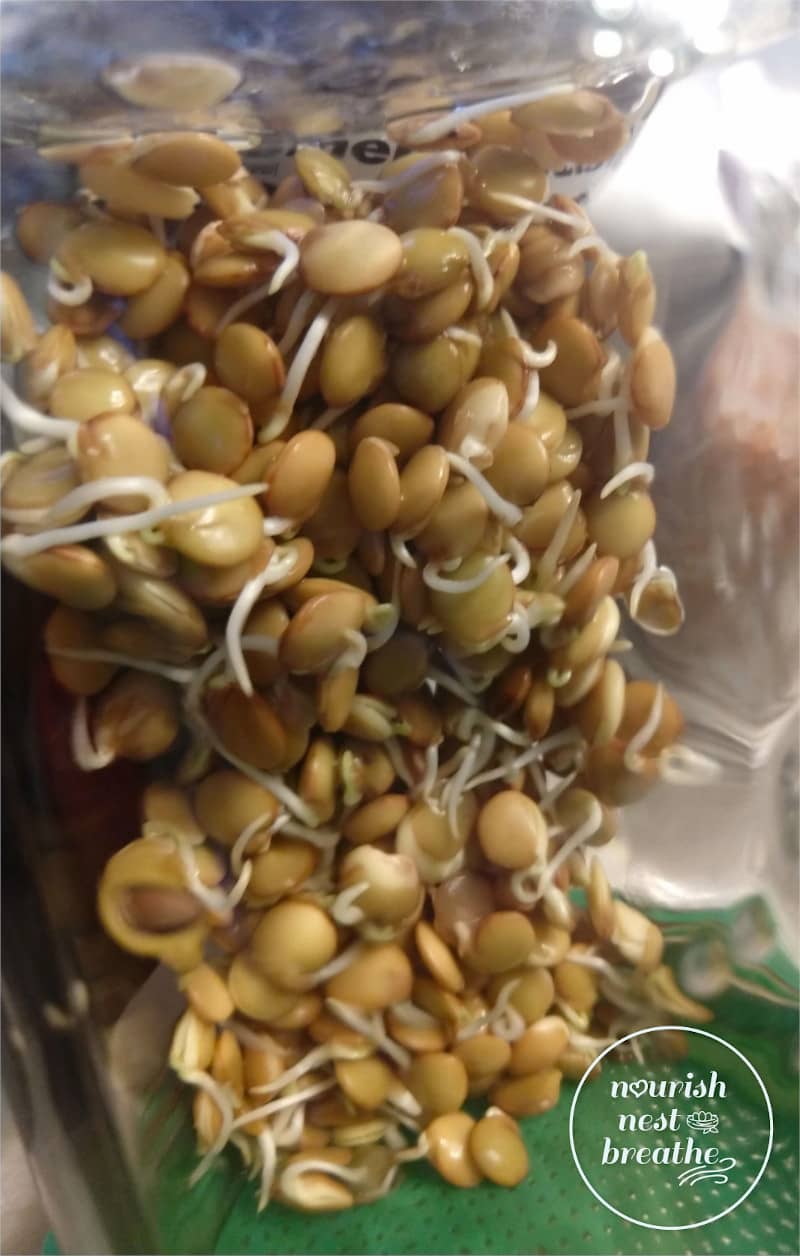 DIY Sprouts – day 3 – most of the lentils have sprouted. This is the earliest I like to start eating them.
DIY Sprouts – day 3 – most of the lentils have sprouted. This is the earliest I like to start eating them.Now I never want to run out of sprouts
To keep a continuous supply of sprouts, you’ll need to figure out how quickly you eat your sprouts and at what stage you like them (just starting to sprout or once the leaves form). If you like to eat them starting on day 4 and it takes you three days to eat them all, then you would start your second jar on day 3 of your first jar of sprouts.
If you want to ensure a constant supply of sprouts, you’ll probably need to have a few jars and a few lids in action at the same time. I’d also suggest making sure you have solid lids to cover the jars when putting them in the fridge. Sprouts dry out quickly in the fridge, so I prefer to keep them in a jar with a solid lid (not a sprouting lid) facing mouth side up. You do not need to continue to rinse your sprouts after placing them in the fridge, but keep a close eye on them – if they were too wet when you put them in, they’ll get mushy and mold.
 Lentil Sprouts (day 5) on an Aldi’s Gluten-Free everything bagel with roasted red pepper hummus – delicious!
Lentil Sprouts (day 5) on an Aldi’s Gluten-Free everything bagel with roasted red pepper hummus – delicious!Beyond Sprouts
There is a world of countertop gardening beyond sprouts, and some people have very involved set-ups for sprouting, microgreens, and windowsill herbs. If you start exploring the possibilities, please do not become overwhelmed, as much as I would love my own microgreen kitchen farm, a few mason jars of sprouts more than meets my needs right now.
However, if you really enjoy growing your own sprouts, there is a world of indoor gardening (as well as outdoor gardening if available to you) to explore. Check out my Pinterest board here for tons of ideas!
Wishing you a jarful of home grown sprouts to brighten up your meals!
I’ve made the conscious choice to keep ads off my blog because I want you to have the best experience possible! Please consider supporting me in providing this ad free content with a tip:
Related
Leave a Reply Cancel reply
This site uses Akismet to reduce spam. Learn how your comment data is processed.
